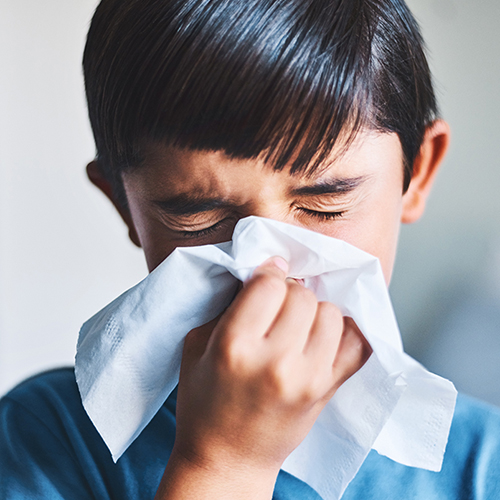December 2021
Every year, the common cold sidelines millions of Americans. It’s the main reason why adults miss work and kids don’t go to school, according to the Centers for Disease Control and Prevention. Sneezing, runny noses, headaches, and body aches are some of the hallmark symptoms of a cold. It’s no wonder the common cold can make you feel miserable.
Because so many people get colds, there’s a lot of misinformation surrounding how to prevent and treat this illness. To make a real difference in preventing and treating colds, take a look at these myths, facts, and prevention tips.
Myth: The common cold is one virus
Fact: More than 200 viruses can trigger symptoms of the common cold, according to the National Institutes of Health. Of these viruses, human rhinoviruses (HRVs) cause more than 50% of common colds, according to a report in Clinical Microbiology Reviews. HRVs also often cause upper respiratory tract infections, middle ear infections, and sinus infections.
Other viruses that can cause colds include the respiratory syncytial virus, human parainfluenza viruses, and human metapneumovirus.
Myth: There’s a season for the common cold
Fact: While colds are more common in the winter and spring, you can catch a cold at any time of year.
Myth: Colds only last a few days
Fact: For most people, cold symptoms linger for seven to 10 days.
Myth: Colds don’t cause serious complications
Fact: In general, colds aren’t serious. But that mild case isn’t true for everyone who gets a cold. Colds can cause serious complications, such as bronchitis and pneumonia. The people at the highest risk of cold complications include elderly people, people with weakened immune systems, and people with respiratory conditions, such as asthma or lung disease.
Myth: You don’t need to see your doctor for a cold
Fact: You should see your doctor if your cold symptoms last more than 10 days, if you have a fever higher than 100.4º Fahrenheit, or if you develop any unusual symptoms.
Myth: You can take antibiotics for a cold
Fact: Antibiotics only work against bacterial infections. They can’t get rid of viral illnesses.
Myth: You can only get a cold if someone coughs or sneezes near you
Fact: Cold viruses can linger in the air and on surfaces for up to 24 hours. You can catch a cold by touching contaminated surfaces and then touching your nose, eyes, or face. You can also get a cold by shaking hands with someone who has a cold after they’ve sneezed or coughed into their hands.
Cold prevention tips
There’s no cure for the cold, so prevention is your best policy to stay healthy. Prevention helps keep the people around you healthy, too.
Here’s how to keep colds at bay for yourself:
- Wash your hands often for at least 20 seconds. You don’t need special soap. Regular soap and warm water will do. If soap isn’t available, use an alcohol-based hand sanitizer that contains at least 60% alcohol.
- Avoid touching your face, eyes, nose, and mouth with unwashed hands.
- Disinfect frequently touched surfaces in your home, such as doorknobs, light switches, and appliance handles. To prevent children from catching a cold, disinfect their frequently used toys.
- Stay away from others when they’re sick. Ask friends and family to reschedule get-togethers and playdates if anyone is sick.
And here’s how to protect others from getting sick from you.
- Stay away from others when you have a cold. If you can, stay home from work when you have a cold, and keep children with a cold home from school.
- Wash your hands after sneezing, coughing, or blowing your nose.
- Follow good sneezing etiquette: if you can’t sneeze into a tissue, sneeze into the upper part of your elbow, completely covering your mouth and nose.
- Move away from others before sneezing or coughing.



